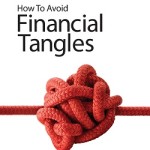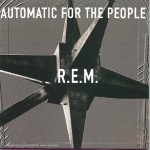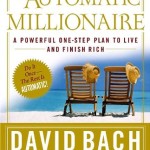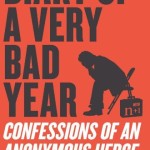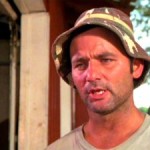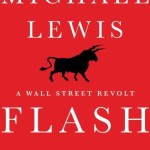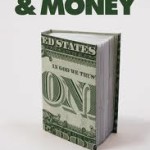
 I learned from my wife the concept of the “feedback sandwich,” by which she means if you want to give someone an important piece of critical advice, it’s often most strategic to cushion the blow with a compliment to start, and a compliment to finish, with the criticism nestled in between.
I learned from my wife the concept of the “feedback sandwich,” by which she means if you want to give someone an important piece of critical advice, it’s often most strategic to cushion the blow with a compliment to start, and a compliment to finish, with the criticism nestled in between.
Michael Scott in Scranton, PA might have given feedback this way.
“Hey, I love your ability to file those papers alphabetically!”
“Everyone here in the office has just one word for you: halitosis.”
“Also, cool green shirt you have on today!”
In reviewing Robert L. Hershey’s All The Math You Need To Get Rich I have had recourse to the feedback sandwich. First, I will list some examples from the book that I quite liked. In the middle, a couple of important concerns. Finally, some kind words about how I would use this book if I taught math to high school kids
What works
Hershey presents basic, essential, practical, financial math and then follows it up with numerous word problems at the end of each chapter to help lock in the knowledge.
Two examples in particular stood out as excellent, and paraphrasing them from Hershey’s book illustrates the importance of Hershey’s project.
Example 1
Two twin brothers, each of whom wants to get rich in 45 years, pursues two different paths toward their goal.
The first brother (aptly named Lucky), in a hurry for wealth, decides to buy lottery tickets. He makes a plan to buy $10 of lottery tickets every day, six days a week, for the next 45 years.
The second brother (named Tim) decides to invest exactly half of the amount spent by brother Lucky in a balanced portfolio of market securities, such as stocks and mutual funds.
How much does Lucky bet and spend over course of 45 years, and what is the probable outcome? How much does Tim invest over the course of 45 years, and what is the probable outcome?
While results may vary, we can calculate the expected value of each of these brothers’ behaviors.
To calculate Lucky’s results, we need to know that lotteries return an expected value of $-0.50 per $1 bet. The point of a lottery, after all, is to raise money for the lottery organizer, and to return about half the money over time to the players.
Lucky bets $3,120 per year ($10 x 6 x 52)
And a total of $140,400 over the 45 years ($3,120 x 45)
Since he loses an expected amount of $0.50 per $1 bet, we can quickly see that Lucky loses $70,200 over the course of his 45 years of lottery playing. Lucky might win $10 here, $100 there, and occasionally $1,000, but the odds in the long run mean he’ll burn up an estimated $70,200 over the years, nearly guaranteed.
What about Tim’s results?
Tim invests $5/day, 6 days a week, 52 weeks per year. His annual investment is $1,560 ($5 x 6 x 52).
Hershey (the book’s author) assumes a 10% gain on investments[1] to calculate Tim’s results after 45 years. Aggregating the compounded returns of annual $1,560 investments at 10%, we can see Tim’s net worth climbs to $1,121,492 after 45 years.
Tim’s a millionaire using just half of the money Lucky ‘invested’ in lottery tickets, while Lucky has a zero net worth.
Now, that’s what I call a useful mathematical comparison.
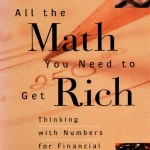
Example number two that I loved from the book
A recent college graduate named Patience is thinking of taking a trip to Europe, which will require her to max out her $5,000 credit card and pay the 18% annual interest charges on the card. Realistically she knows she will stay maxed out for 10 years, so she will have to pay that 18% interest all the while for the next ten years. How much is that?
Alternatively, Patience considers not making the trip to Europe, and instead may invest the amount of the unspent interest in an S&P500 index fund. Hershey assumes a 15% annual return[2] on that investment. How much money would she have then at the end of 10 years?
The annual finance charge, following the trip to Europe, would be $900 ($5,000 x 18%). Over ten years Patience would end up paying $9,000 in interest charges, and still owe $5,000 at the end of ten years.
If, instead, she invested $900 per year in the mutual fund that earns 15% per year, we can calculate – using the magic of compound interest – that she would have $18,274 in her fund.[3] Her positive net worth from investing beats the $5,000 deficit by a long shot. And just as importantly, the interest charge on the credit card ends up costing more than the original trip itself.
My critical thoughts – the bologna in the feedback sandwich
First concern – Who reads this?
One concern I maintain with a book like this – which I fretted about earlier in a review of another math-book-for-non-math-types Innumeracy – is who, honestly, will ever pick up this book? Will people who already feel uncertain about their math skills, however theoretically eager to learn the mysteries of numbers or tempted by the chance to “Get Rich,” actually dig past the first few paragraphs to learn what they do not know?
I don’t know. I doubt it. Math-oriented people enjoy confirming their own math aptitude with a book like this, and they may be able to expand their skills into useful finance applications with this book. I have a harder time picturing non-math folks picking up and actually working their way through the instructions and sample problems, however accessible this book may be. I think Hershey has made this as approachable as possible, but I still question the draw of those who are the intended audience.
Second concern – No way to teach compound interest (my pet peeve)
Every finance-math for non-experts book that I’ve ever read relies on a terrible crutch when it comes to teaching compound interest: The table in the Appendix with compound interest multiplication “factors.” I hate this.
What a proper book on compound interest should teach is the formula FV = PV * (1+Y/p)^N, with definitions of each variable and multiple examples to shows its application. That formula, once understand, can solve any compound interest problem flexibly, and precisely.
This book’s appendix features a y-axis listing the number of compounding terms from 1 to 100, for example (the N in the formula), while the x-axis shows ascending percentages of yield (the Y in the formula). At the end of every example in the book that references these tables, Hershey is forced to say: “That’s not exactly the answer, but it’s close enough.”
I can’t endorse this. I refuse.
All The Math You Need to Get Rich was first published in 1982, the same year in which my fifth grade teacher introduced us to the Timex Sinclair 2000.
[10: Print “Mike” ; 20: Goto 10 ; Run]
At that point in 1982, text appendices of compound interest tables made perfect sense.
Not in 2014, though.
Any reader of a book in 2014 also has use of an Excel spreadsheet program that sits on their desktop or laptop, and can be used to good effect with the formula above.
The text-based, imprecise, crutch of an Appendix table, which no person will carry with them, ever, gets in the way of anyone who ever wanted to actually learn how the compound interest formula really works, in real life.
Phew, got that off my chest.
Back to the complimentary thoughts
If I was assigned a high school math class as a substitute teacher and given 1 month to teach the kids something useful, I would pick a book like All The Math You Need To Get Rich as a textbook. Here are real-life skills for understanding interest rates, percentages, probabilities, and dealing with orders of magnitude – in short most of the things households, investors and citizens need to use on a daily basis to get by. Certainly these help most of us think much more, and much more often, about useful math applications, than the traditional courses – Geometry, Trigonometry, quadratic equations, and Calculus – that make up the majority of traditional high school math curricula.
Not only do these relatively accessible concepts come in handy more often, I would hope – as their substitute teacher – that I could impress upon the unruly high schoolers their own self-interest.
“Learn this about probabilities” I would exhort, “and save yourself thousands over your lifetime by not buying lottery tickets or gambling.”
“Deeply understand interest rates and percentages,” I would urge, “and use your powers for good (getting wealthy) instead of evil (making credit card companies richer).”
This is a fine book and I may use it for teaching my girls what they need to know in the future.


See related book reviews:
Innumeracy by John Allen Paulos
Master Math: Business and Personal Finance Math by Mary Hansen
[1] Astute readers will argue that 10% is too high an assumed return from a portfolio of stocks for 45 years, and I agree. Using a 6% return, Tim’s net worth at the end of 45 years climbs to $331,880. This doesn’t have quite the ring of ‘millionaire’ that the author Hershey probably wanted, but it still isn’t anything to sneeze at, for the cost of a daily Starbucks addiction.
[2] I know I know, too high, but still, work with me here a little bit.
[3] If we assume a more modest 6% return, she would have $11,863.
Post read (4734) times.



